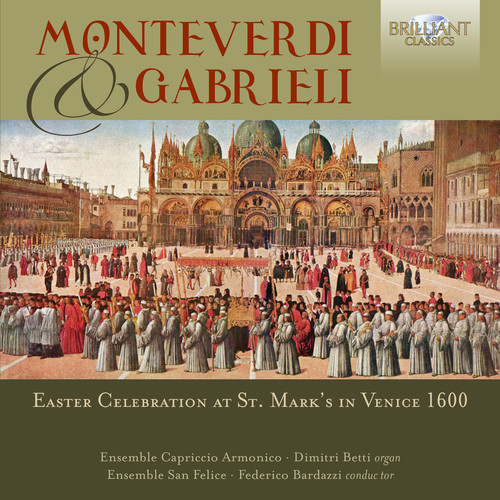Show results for
Deals
- 4K Ultra HD Sale
- Action Sale
- Alternative Rock Sale
- Anime sale
- Award Winners Sale
- Bear Family Sale
- Blu ray Sale
- Blues on Sale
- British Sale
- Classical Music Sale
- Comedy Music Sale
- Comedy Sale
- Country Sale
- Criterion Sale
- Electronic Music sale
- Fantasy Film and TV
- Folk Music Sale
- Hard Rock and Metal Sale
- Horror Sci fi Sale
- Jazz Sale
- Kids and Family Music sale
- Kids and Family Sale
- Metal Sale
- Music Video Sale
- Musicals on Sale
- Mystery Sale
- Naxos Label Sale
- Page to Screen Sale
- Paramount Sale
- Pop and Power Pop
- Rap and Hip Hop Sale
- Reggae Sale
- Rock and Pop Sale
- Rock Legends
- Soul Music Sale
- TV Sale
- TV Sale
- Vinyl on Sale
- War Films and Westerns on Sale

Easter Celebration
- Format: CD
- Release Date: 4/27/2018

Product Notes
Any listener who has heard the punchy, rousing and original account of Monteverdi's Vespers released in 2016 by these forces on Brilliant Classics will be keen to hear music from the same source performed with similar vitality and attention to historical detail. Federico Bardazzi duly obliges with this recreation of Easter at the Basilica San Marco, around the year 1600. Chants alternate with spectacular, antiphonal toccatas and canzonas that bounce off the walls of the generous church acoustic, as well as a slight but still exuberant sonata by Giovanni Paolo Cima. Enclosed within are the separate movements of the four-part Mass by Monteverdi, and the liturgical reconstruction concludes with a setting of the Ave maris stella which, like the Mass, is to be found in Monteverdi's collection of Selva morale e spirituale, no less treasurable in it's way than the better-known Vespers compilation. Indeed the Selva morale dates from several decades later in Monteverdi's output and reflects an even greater harmonic refinement: the linear polyphony of the Mass obeys the rules of the stile antico, while the psalm settings and hymns such as Laudate Dominum and Cantate Domino belong to the more sectional and vividly illustrative style of the seconda pratica which became particularly associated in his work and that of his successors with the secular madrigal. Bardazzi notes that Monteverdi would have expected to perform this music with a mixed-voice choir; the male-only ensemble is a late-19th-century practice. His lively tempi and instrumental arrangements, switching between basso continuo and colla parte instruments, are intended 'to allow Monteverdi's creative genius and originality to permeate the strict counterpoint.'


